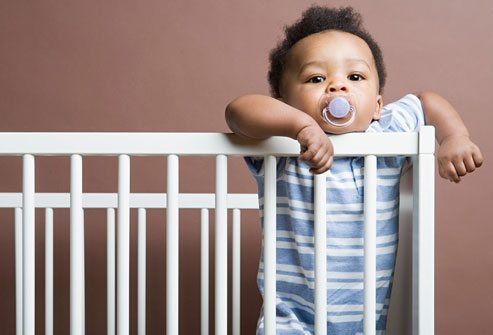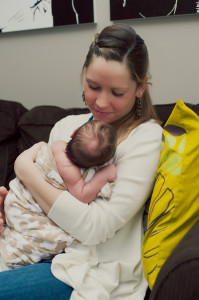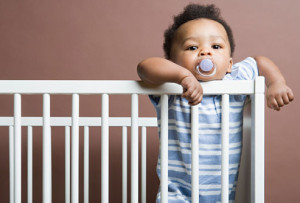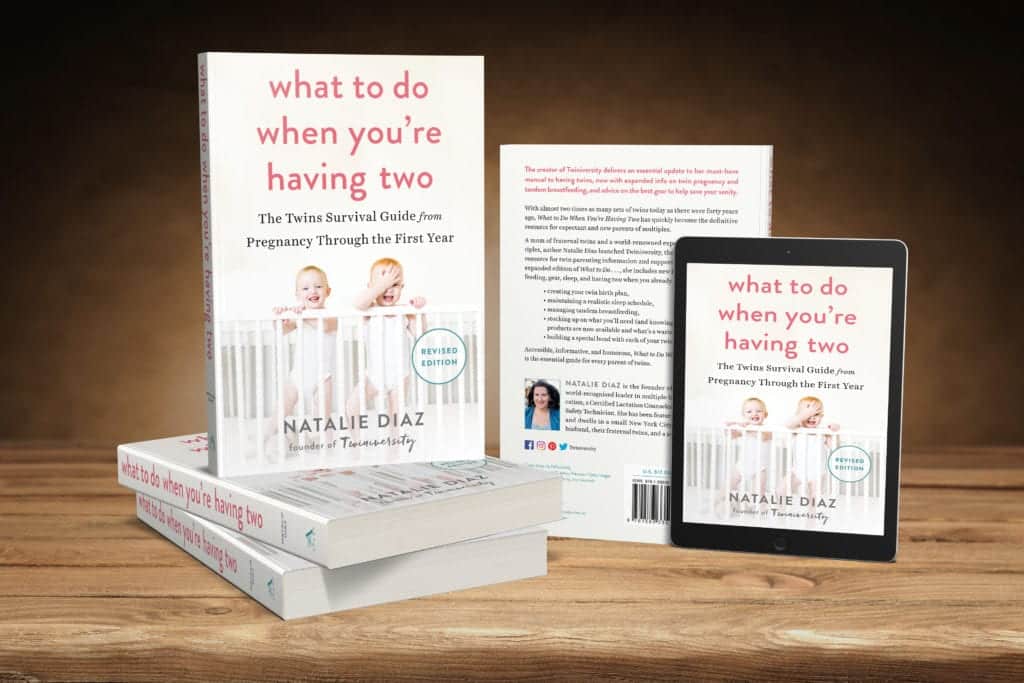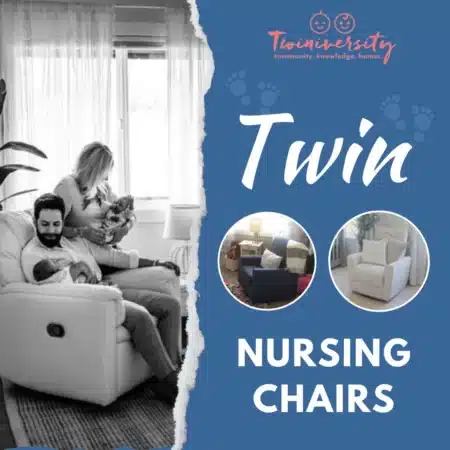Last updated on April 17th, 2024 at 09:45 pm
If you are anything like me, you’ve read about 27 books or websites on sleep training, each of which offers a completely different set of rules and advice. What is a mom or dad to do?
I turned to a friend who, luckily for me, was also a sleep coach. Pam Edwards of Wee Bee Dreaming Pediatric Sleep Consulting is based in Grande Prairie, Alberta, Canada, but she offers online packages as well. From about five months on, she was my go-to “sleep guru” when my boy-girl twins were having trouble sleeping.
Within weeks of moving to an earlier bedtime and paying closer attention to wake times during the day, they were sleeping like champs. Do we still have rough nights? Of course. But it’s no longer a nightly battle, and both the twins and the parents are in much better shape, both mentally and physically. In order to share the amazing work she does, I sat down with her (via the Internet) and discussed exactly what she does and what tips she has for other moms of multiples.
April Rondeau: First of all, how did you get to be a sleep training coach?
Pam Edwards: With the birth of my daughter three years ago, I felt I was prepared for life with a newborn. I figured that babies just slept when they were tired. Boy was I wrong!
After a cranky and irritable child became my new life, I knew something had to change. I picked up my first book on sleep and my life was changed. I realized just how many things I was doing wrong and that I was sabotaging any chance of my daughter getting the healthy sleep that her growing body and mind needed.
After working to re-establish a healthy foundation for sleep, the change in her was absolutely remarkable. After having this amazing experience I researched and read every article and book out there on sleep.
Fast forward to the birth of my son one year ago and I was now armed with all the tools to teach him healthy sleep habits from day one. It was at this time that I decided to pursue a career as a professional sleep consultant.
Sleep is a biological need; just like we wouldn’t feed our children junk food, we shouldn’t feed them junk sleep either. It is my mission to help families become better rested, as a well-rested family is a happy family!
April: So, what is your sleep training philosophy in a nutshell?
Pam: The most important component of any sleep training plan is choosing a method that fits with the family’s parenting philosophies. No matter which method we choose, the end goal is always the same—for baby to be sleeping independently for an age-appropriate length of time during the day and at night.
April: What is the first step when it comes to sleep training?
Pam: There are many steps we should follow before we dive into a sleep training plan. First, we want to be well informed about baby sleep. How much sleep does your baby need? How many naps per day should they be having? How long should they be awake during the day, and what time should bedtime be? No amount of sleep training will work on a child that is overtired, so this step is very important.
Our next step would be picking a method that the entire family is comfortable with. We also want to make sure our baby’s environment is conducive to sleep. This means that the bedroom should be very dark (during the day too!) with white noise playing continuously, the crib needs to be boring—no mobiles, projectors, etc.—and baby’s room should be a cool and comfortable temperature (66–70°F is the ideal).
April: What are your favorite sleep training “accessories”?
Pam: First, a super tight swaddle (for newborns until they are rolling) or a sleep sack (for older babies out of the swaddle). The swaddle is an invaluable tool to help babies sleep better. But if baby is wiggling their arms out, it isn’t tight enough and won’t be effective. Oftentimes parents say that their child hates the swaddle, but I can assure you that in most cases it is the process of swaddling that they dislike. Once they are wrapped up all snug and tight, they will sleep much more soundly.
I also can’t stress enough how great sleep sacks are, not only because they eliminate the need for blankets, but also because they provide baby with a cue for sleep and prevent too much monkey business in the crib.
As well, I recommend white noise machines and video monitors to all my clients.
April: How long should it take to sleep train your baby?
Pam: This all depends on the method you choose and whether you are 200% consistent throughout the entire process. Depending on whether you choose a more direct approach or a gentler approach, results will be seen within 3 days to 2 weeks.
April: How do twins change a sleep training plan?
Pam: Surprisingly, there aren’t many differences between sleep training twins versus singletons. The biggest difference is the time required to see results. With a single baby, the process will likely be quicker, as the baby doesn’t have another baby potentially waking him up through the night. With two, there is a chance that one twin will wake up more often than the other, thus prolonging the process.
As well, choosing a sleep coaching method with twins is even more important, as many of the “gentler” methods just won’t work the same as they would with a single child. This isn’t to say that the gentler methods won’t work with twins, but they may take even longer or require both parents to be present during the process.
April: What are your special tricks when working with a mom of multiples?
Pam: It is very important to set realistic expectations when working with a mother with twins. Mom needs to understand that the process will be more difficult, more stressful, and may take longer. We also need to be sure that Mom has the full support of her spouse, a friend, or a relative, as sleep training twins is not a task that should be taken alone! As all parents of multiples know, having a schedule is necessary in order to survive. The same goes for a sleep schedule.
April: Do you recommend multiples share a room or have separate spaces?
Pam: I encourage parents to continue with whatever sleep arrangement they envisioned for their babies in the long-run. If you know you want your twins to share a room—then do it! If you want them to sleep separately, then that works too. When sharing a room, it is important for the babies to get used to each other’s noises and cries, so I advise parents to sleep train both babies at the same time. While this might take longer to accomplish than if we worked with one child and then the other, it eliminates the need for an adjustment period when you move the twins back in together.
April: What advice do you have for a mom (or dad) at the end of her rope with two crying babies?
Pam: You need to lean on each other. Give each other breaks. Help each other at night—tackling twins is a two-person job! Always remember that there is an end in sight. If parents are feeling completely overwhelmed with their babies’ sleep, I would recommend seeking the help of a sleep consultant. Oftentimes there are adjustments to a baby’s schedule or environment that can help improve sleep. A consultant will work with you one-on-one to find an approach that fits your family and will offer daily support throughout the entire process. While sleep training is never fun, it usually results in less stress overall than the family was experiencing with all the night-wakings and rocking/bouncing/nursing all night long.
April: What is your favorite success story?
Pam: I can remember after speaking about sleep at a children’s group, I had a mom approach me and burst into tears. She was so exhausted and did not know where to turn and thought that all hope was lost for her son (and her family) to sleep well. We worked together for two weeks, but results were seen in days.
I also remember my first twin case and how intimidated I was at the thought of TWO babies going through the sleep training process. Surprisingly, there wasn’t really much difference between any of the other families I worked with, and it was very rewarding to see how quickly everything came together for the family. It gave me such confidence going forward to work with other families with multiples.
If you want to talk to Pam about your twins’ sleep, visit her website or “like” her Facebook page, where she gives out great advice daily. Happy sleeping!

April Rondeau is an editor and writer as well as a mother of 16-month-old boy-girl twins. She loves reading, photography, movie marathons, popcorn, and wine.
Are You a New Twin Parent?
Check out Natalie Diaz’s book:
“What To Do When You’re Having Two
The Twin Survival Guide From Pregnancy Through the First Year”
In What to Do When You’re Having Two: The Twins Survival Guide from Pregnancy Through the First Year, national twins guru and founder of Twiniversity (and twin mom herself!) Natalie Diaz provides a no-holds-barred resource about life with twins, from pregnancy and birth all the way through your duo’s first year of life.
Accessible and informative, What to Do When You’re Having Two
is the must-have manual for all parents of twins.

